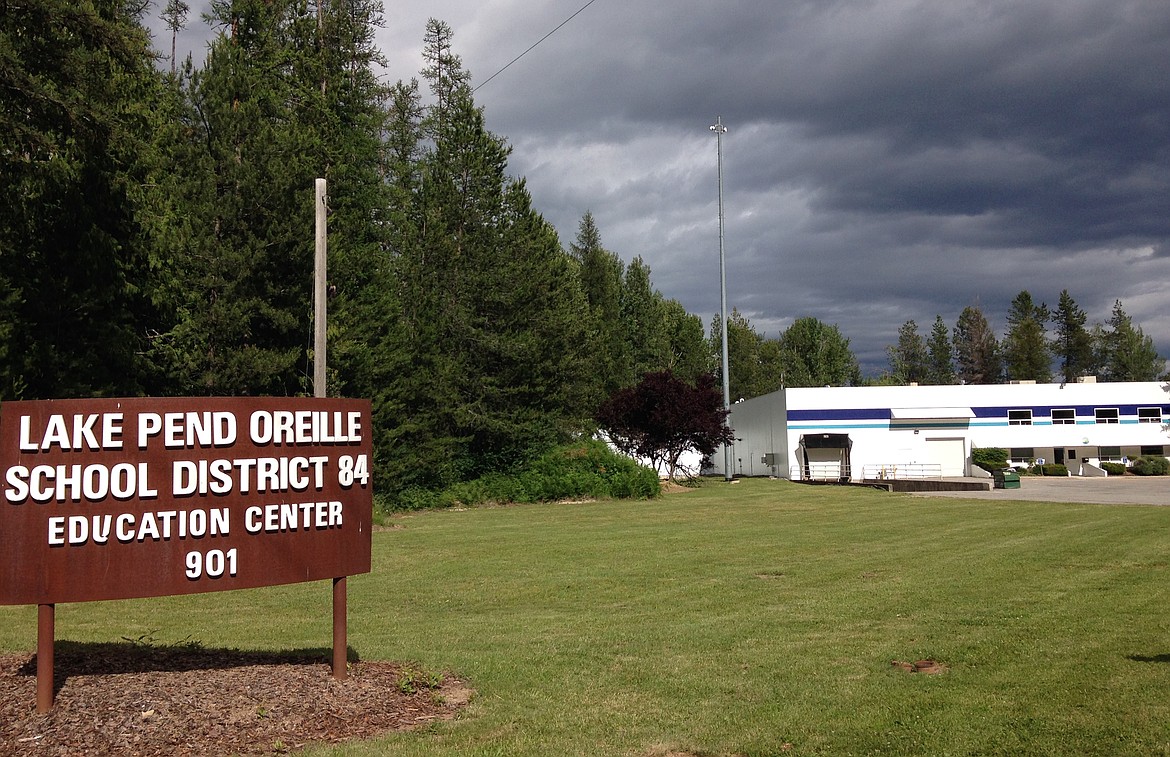School staff go ‘above and beyond’ for students
SANDPOINT — A little over a week after the first day of school, administrators say that while in-person classes have required greater effort to pull off, students and teachers are glad to be back.
“I can’t stress the excitement,”said Tom Albertson, superintendent for the Lake Pend Orielle School District. “It’s all worth it when you get to see students learning.”
The first week and a half has not been without hiccups. Just Thursday, a student at Sandpoint High School tested positive for COVID-19, Albertson said.
“The teachers had done an excellent job in knowing exactly strict seating charts. So we knew exactly who had been sitting with who and which classes,” he said. “So out of a school of almost 1,000 students, at this time, I believe there's 18 students who are going to have to quarantine for 14 days.”
The West Bonner County School District, meanwhile, has not experienced a case since schools opened but previously had two teachers test positive for the virus shortly before school began.
"One employee was already removed from the building before the bulk of our staff came back to school," WBCSD Clerk Jennifer Anselmo told The Daily Bee in an email for an article published Sept. 6. "One employee was present at our district staff back-to-school day [Sept. 1.], social distancing was in place and masks were given out."
Despite some challenges, overall the transition has been relatively smooth, Albertson said.
Schools in both the LPOSD and WBCSD are basing their in-person classes on reports from the Panhandle Health District for Bonner County.
When the county is in the green or yellow zones, indicating zero and minimal cases in the respectively, schools remain open. LPOSD and WBCSD have slightly different models, with LPOSD using a blended learning method as long as the county is in the yellow phase. At orange, or moderate, the LPOSD Board of Trustees may decide to shift to a hybrid plan, according to their website.
In the WBCSD, schools switch to a two-day-a-week hybrid system when Panhandle health rates cases in the orange category, and family members are grouped on the same days.
If the county reaches the red zone, indicating “substantial” cases, both school districts will switch to completely distance learning.
The school districts also have unique plans for minimizing risks while students are attending class.
In K-6 grade, LPOSD uses a cohort system to limit potential exposure, Albertson said. Students are expected to wear masks in transit, and allowed to take them off when confined to a room with just their cohort of roughly 20 students. If a student contracts the virus, the student’s cohort self-quarantines instead of the entire school closing.
At the secondary level where cohorts are not feasible, he said all students are expected to wear face coverings and social distancing is practiced, and schedules are arranged to limit exposure.
The WBCSD, by contrast, relies more heavily on social distancing and frequent sanitization. Instructors are required to wear face coverings, but students are not.
There, many teachers are instructing from behind shower curtains while students, usually mask-less, sit at desks spaced as far apart as possible.
“Probably 5-10% of the students are wearing a mask,” said Paul Lamb, Priest River High School principal.
However, even though most don’t wear masks, Lamb said students are following social distancing guidelines.
“They want to be with their friends,” Lamb said. “They’re doing everything they can to make that possible.”
Many of the differences in LPOSD and WBCSD’s practices may be a reflection of the practices that have been accepted by those schools’ students and families.
While families have the option to homeschool or switch their children to entirely online school through the Idaho Digital Learning Academy, most families in the WBCSD are choosing to keep their children in school and continuing the use of school buses, Anselmo said.
Approximately 30 students’ families have contacted the WBCSD saying they plan to homeschool or enroll in the IDLA, Anselmo said.
In contrast, the LPOSD has seen a decrease in enrollment of about 275 students.
Usually, enrollment remains relatively flat, Albertson said, sometimes increasing by a few dozen per year.
“I would say 100% are related COVID for a one for one reason or another,” he said.
When schools took the emergency move of transitioning to completely online education this spring, it was hard for everyone involved, Albertson said. From a social and emotional standpoint, students had difficulty not being able to see their friends, or have the same levels of accountability for schoolwork.
“The feedback I got from parents was, ‘boy, this is really difficult.’ How do you motivate [students]?’” Albertson said. “I think we have much more structure now in our blended learning in the sense that within that, at the secondary level classes are 55 minutes or 60 minutes long. They have that structure there.”
From an educational standpoint, distance learning has also presented challenges for students who don’t have easy internet access.
“From our survey, about 28% [of students] did not feel they had adequate access to the internet,” Albertson said.
Those challenges were especially tough in the spring, he said. Since then, community members have rallied to ensure greater access for students should the caseloads increase again.
This includes work with local libraries, said Kelly Fisher executive assistant to the superintendent for LPOSD.
“The community has come together,” she said. “I think they’re ready.”
In the WBCSD, students will use Google Classroom for hybrid learning, Anselmo said, and be sent home with additional homework packets. Students without internet access will be given USB drives with pre-recorded lessons.
While schools are currently open, educators are working to prepare should the caseload in the county increase.
“We are doing as much work as possible on Google Classroom and recording,” Lamb said. “Right now we’re spending a lot of time and effort preparing for that.”


